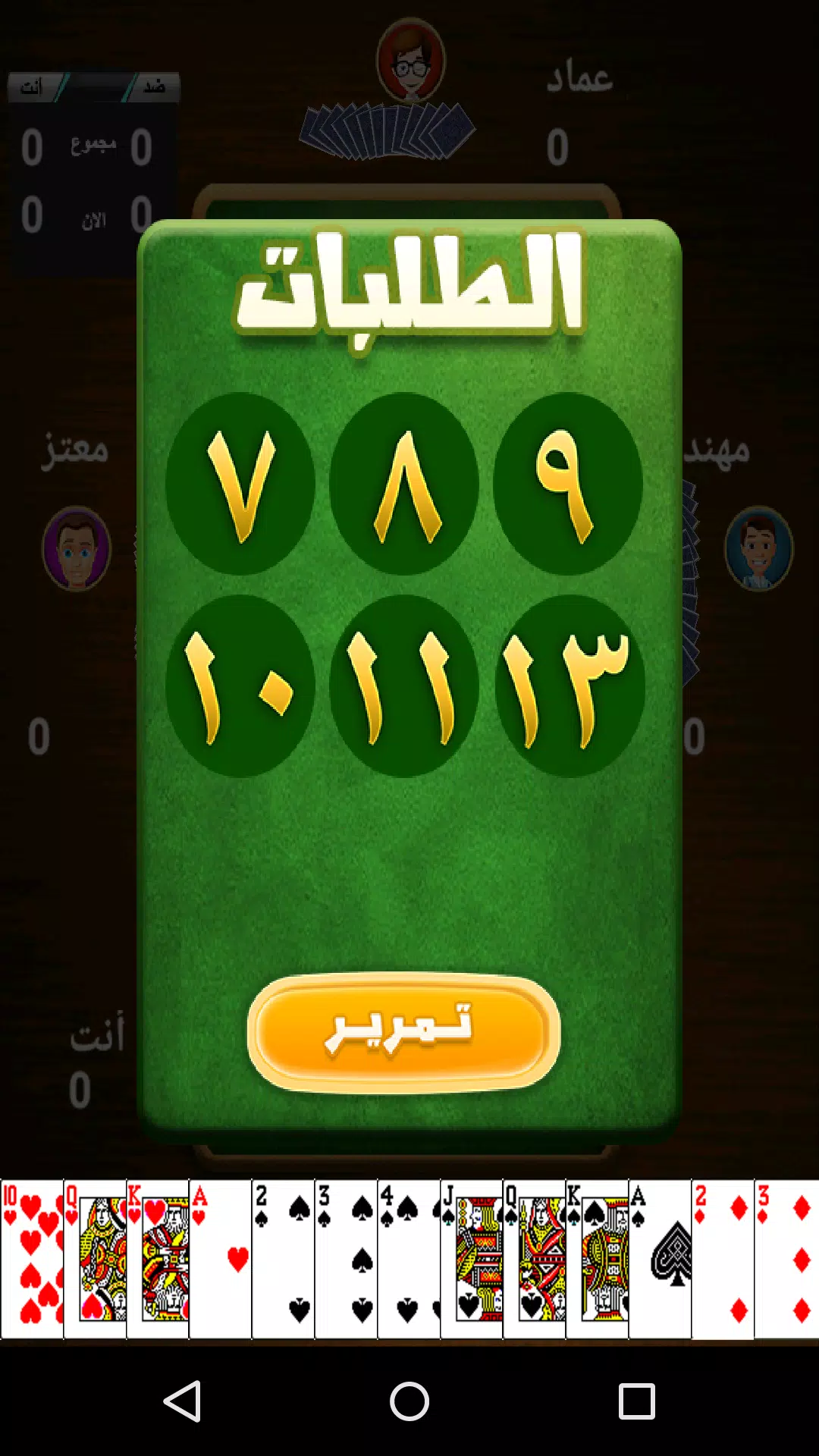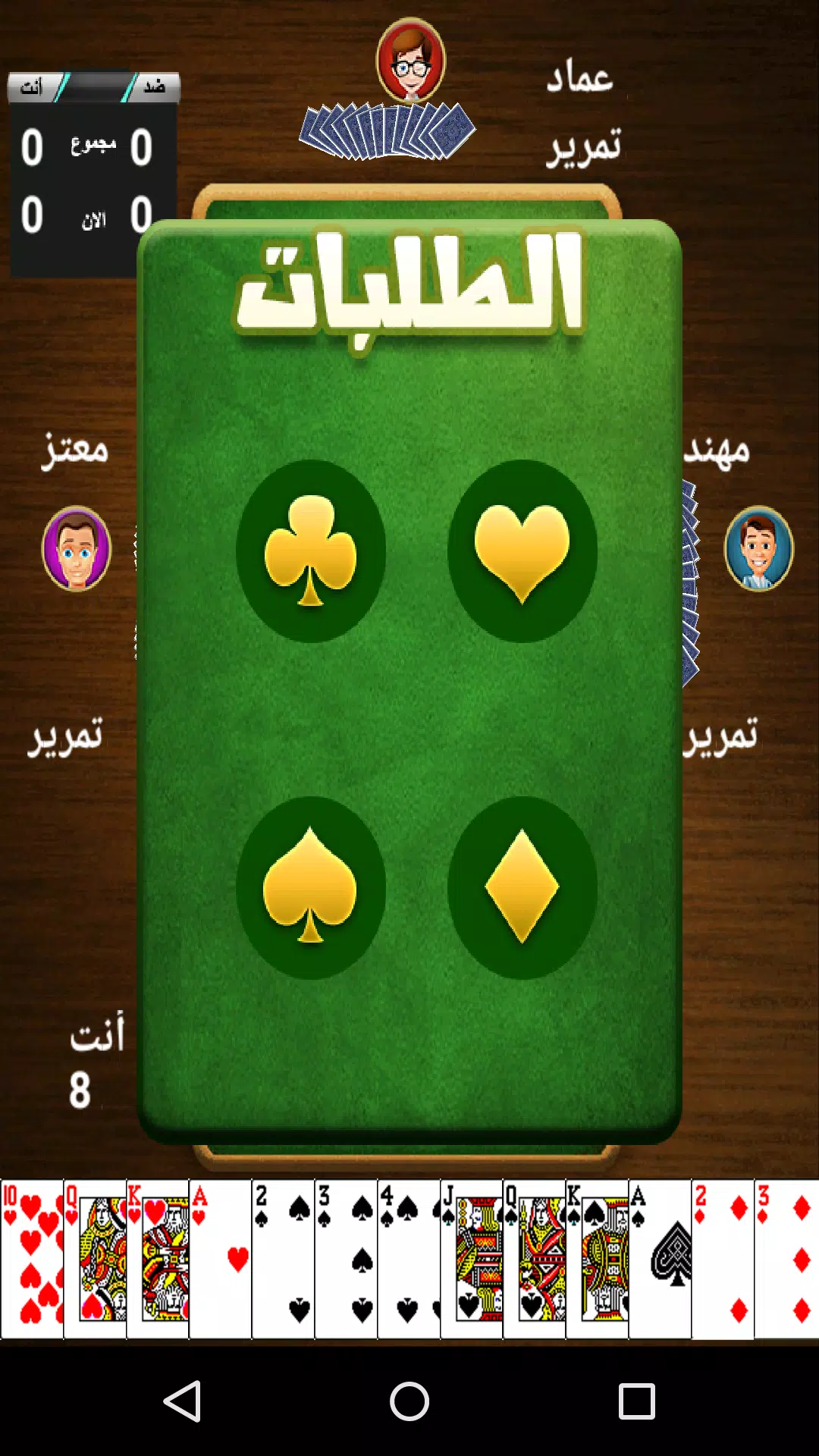طرنيب Tarneeb
Tarneeb, a popular card game in Arab countries, particularly in the Levant, is known as "rule" in the Arab Gulf states. The game's primary objective is to win consecutive Tarneeb rounds. It involves four players divided into two teams, with each team consisting of two players positioned opposite each other. The game continues through multiple rounds until one team emerges as the winner.
The game is played with a standard 52-card deck, excluding Jokers. The gameplay begins with the player to the left of the dealer. In Tarneeb, each round starts with a bidding phase, beginning with the player to the right of the dealer. Bidding ranges from 7 to 13, known as "Cabot" or "livers." The highest bidder gets to choose the Tarneeb suit.
During gameplay, if a team fails to meet their bid, they lose points equivalent to the difference. For example, if a team bids for 10 but only wins 9 tricks, they lose 1 point, while the opposing team gains points for the tricks they won, which in this case would be 4 points if they won 4 tricks. If the opposing team wins 5 tricks, the bid is considered a "scam," and the bidding team loses additional points.
The game concludes when one of the teams reaches a predetermined score, either 61 or 31 points, based on the agreement made before starting the game.
The card hierarchy in Tarneeb is as follows:
- A (Ace) - referred to as "Cut"
- K (King) - referred to as "Sheikh"
- Q (Queen) - referred to as "girl"
- J (Jack) - referred to as "born"
- Then, in descending order from 10 to 2
طرنيب Tarneeb
Tarneeb, a popular card game in Arab countries, particularly in the Levant, is known as "rule" in the Arab Gulf states. The game's primary objective is to win consecutive Tarneeb rounds. It involves four players divided into two teams, with each team consisting of two players positioned opposite each other. The game continues through multiple rounds until one team emerges as the winner.
The game is played with a standard 52-card deck, excluding Jokers. The gameplay begins with the player to the left of the dealer. In Tarneeb, each round starts with a bidding phase, beginning with the player to the right of the dealer. Bidding ranges from 7 to 13, known as "Cabot" or "livers." The highest bidder gets to choose the Tarneeb suit.
During gameplay, if a team fails to meet their bid, they lose points equivalent to the difference. For example, if a team bids for 10 but only wins 9 tricks, they lose 1 point, while the opposing team gains points for the tricks they won, which in this case would be 4 points if they won 4 tricks. If the opposing team wins 5 tricks, the bid is considered a "scam," and the bidding team loses additional points.
The game concludes when one of the teams reaches a predetermined score, either 61 or 31 points, based on the agreement made before starting the game.
The card hierarchy in Tarneeb is as follows:
- A (Ace) - referred to as "Cut"
- K (King) - referred to as "Sheikh"
- Q (Queen) - referred to as "girl"
- J (Jack) - referred to as "born"
- Then, in descending order from 10 to 2





